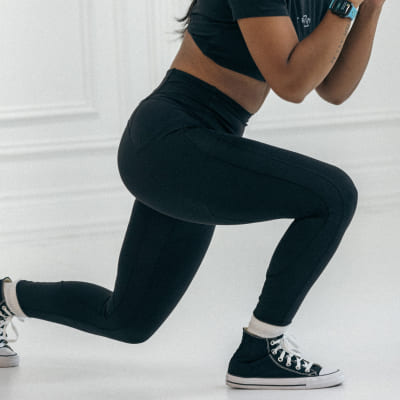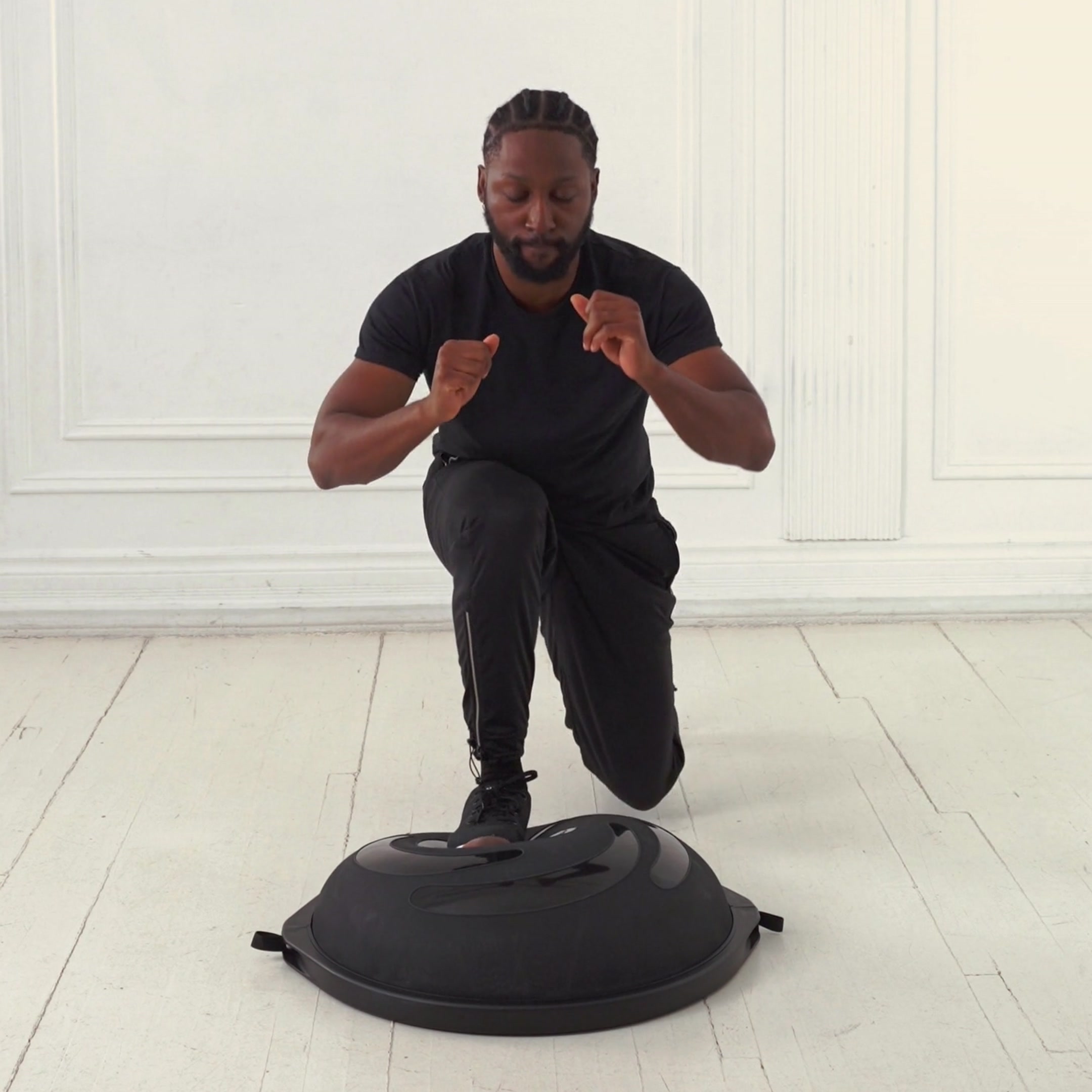
Video Coming Soon
We're working on adding video demonstrations for this exercise.
TRX Reverse Lunge to Jump
Unilateral plyometric exercise using TRX suspension trainer that targets quads, glutes, and hamstrings to build lower body power, strength, and stability; ideal for athletic conditioning and unilateral balance.
About Exercise
Equipment
Others
Difficulty
4/5 • Intermediate
Primary Muscle Groups
Quads, Glutes
Secondary Muscles
Calves, Abs, Obliques, Lower Back, Hip Flexors
Popularity Score
5
Goals
Training Style
Setup Requirements
Requires Rack
No
Requires Bench
No
Requires Spotter
No
Space Needed
Medium
Noise Level
Moderate
Muscle Breakdown
View Muscle MapQuads
9/10Rectus Femoris, Vastus Lateralis, Vastus Medialis
Glutes
8/10Glute Max, Glute Medius
Hamstrings
7/10Biceps Femoris, Semitendinosus, Semimembranosus
Calves
5/10Gastrocnemius, Soleus
Abs
4/10Rectus Abdominis, Transverse Abdominis
Obliques
4/10External Obliques, Internal Obliques
Lower Back
3/10Erector Spinae
Hip Flexors
3/10Iliopsoas
Programming
Typical Rep Range
4-10 reps
Rest Between Sets
60-120 seconds • Allow full recovery for power output
How to Perform
Adjust TRX straps to mid-length and face away from anchor. Place top of one foot in foot cradles behind you, then hop forward on standing leg to create strap tension. Stand tall with core braced, hands at sides or clasped for balance.
- Inhale and bend front knee to lower into reverse lunge until front thigh is parallel to ground and back knee hovers above floor, keeping torso upright.
- Explode upward by driving through front heel and mid-foot to jump off ground.
- Drive suspended knee forward toward chest for power or keep it extended.
- Exhale and land softly by bending knees to absorb impact and return to lunge position.
- Repeat for reps on one leg, then switch sides.
Coaching Tips
Form Cues
- Front knee tracks over toes
- Drive through heel
- Keep core braced
- Land softly on bent knees
- Maintain upright torso
Breathing
Inhale during controlled lunge descent and brace core; exhale forcefully during explosive jump and landing.
Tempo
3-0-1
Range of Motion
Descend until front thigh parallels ground with back knee hovering above floor; fully extend hips and knees during jump before controlled landing into lunge.
Safety
Safety Notes
- Avoid if knee or ankle instability present
- Skip with balance disorders or vertigo
- Modify for lower back issues
- Progress from non-jump lunge first
- Control descent to protect joints
Spotting
No spotter needed; use wall or stable surface for balance support if beginner.
Common Mistakes
- Knee caves inward
- Front knee past toes
- Rounded lower back
- Hard impact on landing
- Loss of balance from poor tension
When to Avoid
- Knee instability or recent injury
- Ankle sprains or chronic instability
- Balance disorders or vertigo
- Severe lower back problems
Flexibility Needed
- Adequate ankle dorsiflexion for lunge depth
- Hip flexibility for knee drive
Build Up First
- Master basic reverse lunge
- Proficient with TRX stability
- Single-leg balance competency
Also known as
TRX Suspended Reverse Lunge Jump, TRX Jumping Reverse Lunge, TRX Runner's Lunge Jump
Found this helpful?
Share your thoughts or help us improve this guide.
Similar Exercises
TRX Reverse Lunge to Knee Drive
Rings
Quads, Glutes

TRX Reverse Lunge
TRX
Quads, Glutes
Dumbbell Balance Trainer Reverse Lunge
Balance Trainer, Dumbbells
Quads, Glutes

Balance Trainer Alternating Lunge Jumps
Balance Trainer
Quads, Glutes
TRX Curtsy Lunge to Lateral Lunge
Others
Glutes, Quads

Resistance Band Reverse Lunge
Bands
Glutes, Quads

Resistance Band Reverse Lunge with Pallof Press
Bands
Glutes, Quads

Barbell Reverse Lunge
Barbell, Squat Rack
Quads, Glutes

Dumbbell Ipsilateral Reverse Lunge
Dumbbells
Quads, Glutes

Dumbbell Reverse Lunge
Dumbbells
Quads, Glutes


subscribe to our newsletter
Contact Us
hello@trainfitness.aiFind Us
130 Spadina Avenue, Toronto,
Ontario, M5V 0H4, Canada
©2025 All Rights Reserved
